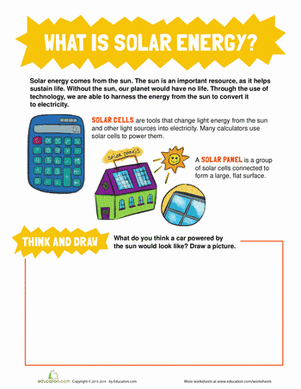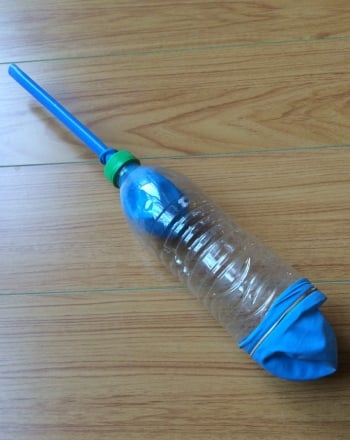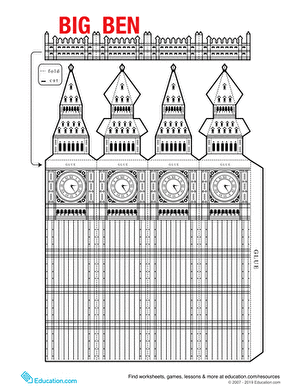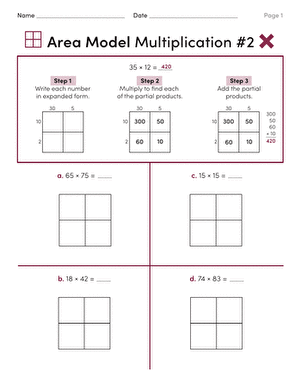Science project
Scale Model of the Solar System
A solar system is a group of planets and other space material orbiting (going around) a star. In our solar system, that star is known as the Sun and the planets are Mercury, Venus, Earth, Mars, Jupiter, Saturn, Uranus and Neptune.
The solar system models you’ve seen before probably don’t show how much bigger some planets are than others, or, more importantly for space travel, how far away the planets are from the Sun and each other. The Earth is about 150 million kilometers (93 million miles) from the Sun. Because this distance is so important to us Earthlings, it has been given a special name, called the Astronomical Unit (A.U.) for short. The Earth is one astronomical unit from the Sun. Planets that are closer to the Sun than the Earth have a measured distance of less than one A.U. while objects farther from the Sun than Earth have a measured distance of greater than one A.U.
The size of a planet can be determined from its diameter. Diameter is the length of a straight line that passes through the center of a circle or sphere and whose endpoints lie on the surface of the circle or sphere.
In this activity, you will make two scale models of the solar system. A scale model uses the same measurement ratios as the real object does. The first model will compare the distances between the planets and the Sun. The second model will compare the sizes of the planets. You probably won’t be able to display either of these models, but you will learn a lot about the real dimensions of space.
Problem
How can we make a solar system scale model?
We want our model to reflect the relative distances and sizes of the planets.
Materials:
- Meter stick (this project is much easier if you use the metric system—besides, scientists always use this system!)
- Big outdoor space, at least 33 meters long. Do your experiment on a day that is not windy.
- Paper
- Pencil
- Large glass or small bowl
- Scissors
- Black marker
- Optional: Eight friends to hold your planets, or you can set the planets down on the ground after you measure the distance from the Sun.
- Optional: Camera to make a permanent record of your model.
Procedure: Scale Model of Distances from Sun
- Trace 9 circles using the bowl as a guide. Because the distance scale model only is concerned about distances between the planets, you can make all the planets the same size.
- Label the circles Sun, Mercury, Venus, Earth, Mars, Jupiter, Saturn, Uranus and Neptune.
- Cut the circles out.
- Position yourself as the Sun.
- Give each of your friends a cut-out planet to hold.
- Have your friends position themselves the following distances from you. (Note that some of the measurements are in centimeters rather than meters. A centimeter is 1/100 of a meter, just like a cent is 1/100 of a dollar).
|
Planet |
Distance AU |
Model Distance from “Sun” |
|
Mercury |
.38 |
38 centimeters |
|
Venus |
.72 |
72 centimeters |
|
Earth |
1.0 |
1.0 meter |
|
Mars |
1.5 |
1.5 meters |
|
Jupiter |
5.2 |
5.2 meters |
|
Saturn |
9.5 |
9.5 meters |
|
Uranus |
19.2 |
19.2 meters |
|
Neptune |
30.1 |
30.1 meters |
Materials:
- Metric ruler
- White poster board
- Pencil
- Drafting compass (the kind you draw circles with)
- Scissors
- Permanent Marker
Procedure: Scale Model of Relative Diameters of Planets
- First, we need to compare the diameter of the Earth to that of the other planets. Remember that diameter is the length of a straight line going through the middle of a circle. The Earth’s diameter is 12,750 km. We can divide the diameter of the Earth into the diameters of all the planets, to get a relative comparison. The Sun, with a diameter of 1,393,000 km, is over a million times bigger than Earth and would be too big to draw on a piece of paper for this activity.
|
Planet |
Diameter in kilometers |
Relative Diameter Compared to Earth |
Size in cm |
|
Mercury |
4800 |
.376 |
.4 cm |
|
Venus |
12100 |
.949 |
.9 cm |
|
Earth |
12750 |
1.00 |
1 cm |
|
Mars |
6800 |
.533 |
.5 cm |
|
Jupiter |
142800 |
11.2 |
11 cm |
|
Saturn |
120660 |
9.46 |
9 cm |
|
Uranus |
51800 |
4.06 |
4 cm |
|
Neptune |
49500 |
3.88 |
3 cm |
- Use the ruler to draw a line for the diameter. Start with drawing the relative diameters of Jupiter, Saturn, Uranus and Neptune.
- Using the compass, draw circles around the diameters.
- Fit in the smaller planets (Earth, Mercury, Venus, and Mars) around where you drew the bigger planets.
- Label the planets, so you don’t forget which is which when you are cutting them out. For tiny planets, you might have to use an abbreviation.
- Cut your planets out.
Results
When you build the scale model of solar system distances, you will undoubtedly notice that some of your friends will be much closer together than others. Some of your friends will have to stand quite close to each other, while others will be far enough away to have a hard time hearing you! When you compare the sizes of the planets, Jupiter and Saturn will seem gigantic compared to the others.
Why?
The inner planets of the solar system (Mercury, Venus, Earth and Mars) are relatively close to the Sun and each other, while the outer planets are relatively distant from each other and the Sun. The material that makes up the solar system is not distributed evenly. The Sun, Jupiter, Saturn, Uranus and Neptune make up the bulk of the material in the solar system. Our own planet is tiny in comparison!
Going Further
Do you want to make a scale model of the solar system where both the distances and diameters are proportional to reality? This table expresses the diameters in A.U, so the size of the planet is proportional to its distance from the Sun. Remember that we set 1 AU, the distance between the Earth and Sun, as equal to 1 meter.
|
Planet |
Diameter in kilometers |
Relative Diameter In AU (meters) |
|
Mercury |
4800 |
3.2 x 10-5 |
|
Venus |
12100 |
8.1 x 10-5 |
|
Earth |
12750 |
8.5 x 10-5 |
|
Mars |
6800 |
4.5 x 10-5 |
|
Jupiter |
142800 |
9.5 x 10-4 |
|
Saturn |
120660 |
8.0 x 10-4 |
|
Uranus |
51800 |
3.5 x 10-4 |
|
Neptune |
49500 |
3.3 x 10-4 |
As you can see, all the planets would be too tiny to trace and cut out using equipment you have at home. What this table shows you is that space is, as the name suggests, mostly empty, and even big planets make up a tiny part of our solar system.
Education.com provides the Science Fair Project Ideas for informational purposes only. Education.com does not make any guarantee or representation regarding the Science Fair Project Ideas and is not responsible or liable for any loss or damage, directly or indirectly, caused by your use of such information. By accessing the Science Fair Project Ideas, you waive and renounce any claims against Education.com that arise thereof. In addition, your access to Education.com's website and Science Fair Project Ideas is covered by Education.com's Privacy Policy and site Terms of Use, which include limitations on Education.com's liability.
Warning is hereby given that not all Project Ideas are appropriate for all individuals or in all circumstances. Implementation of any Science Project Idea should be undertaken only in appropriate settings and with appropriate parental or other supervision. Reading and following the safety precautions of all materials used in a project is the sole responsibility of each individual. For further information, consult your state's handbook of Science Safety.













